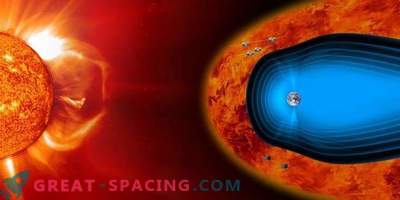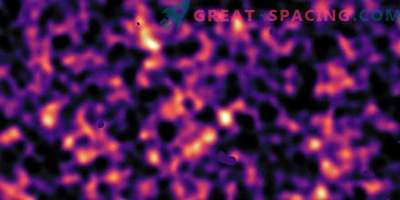
Artistic vision of TRAPPIST-1, based on the obtained information about the diameters, masses and remoteness of the planets from the host star. Most likely, the worlds are subjected to powerful bombardment of charged particles from stellar winds
TRAPPIST-1 is a system of 7 world-sized worlds revolving around an ultracold dwarf star distant from us by 120 light years. It is believed that the age of the star and the entire system reaches 5-10 billion years, which may be twice as large as the solar system. Researchers trying to find the existence of life in other places, pay attention to the old system, because they have more time for chemical reactions and evolution.
But the problem is that all these worlds are located close to the star and are located in the tidal block (always turned by one side). This means that they must absorb huge doses of radiation and high-energy particles. Unfortunately, this effect destroys the atmospheric layer.
The new study decided to carry out a theoretical simulation of the effect of high-energy protons in the stellar wind on exoplanets. Particles are created by star flashes or shock waves caused by magnetic events in the star corona. Measurements of solar eruptions allow you to create a basis for a model. Thus, it was possible to form the first realistic simulation of the propagation of energetic particles in the turbulent medium of the magnetic field of an M-dwarf star and its wind, after which they adapted the parts to the TRAPPIST-1 system. It turns out that the particles are captured by the magnetic field and sent to two polar streams focused on the orbital plane of the planets.
It is believed that the potentially habitable planet TRAPPIST-1e is attacked by a stream of protons, whose number is a million times larger than that received by the modern Earth. But there are many more variables, such as the angle between the magnetic field and the axis of the star rotation, so there is a big uncertainty about the numbers.











































